Goettler and Co. plan new Everest route variant
This year, the Tibetan north side of Mount Everest works like a magnet to German professional climbers. David Goettler has announced that he also wants to climb the highest mountain in the world from the north this spring, along with his German friend Daniel Bartsch and the Canadian Raphael Slawinski. “If everything runs perfectly, we want to try a variant or a new route. Others have to decide how it is called at the end”, the 36-year-old tells me on the phone. The planned ascent route runs near the normal route, first on the left, later crossing it between Camp 2 (7500 meters) and 3 (8300 meters), leading to the “Great Couloir” (also called Norton Couloir). “This would allow us to avoid possible traffic jams at the rocky steps on the normal route”, says David. The trio wants to climb without Sherpa support and without bottled oxygen.
![]() read more
read more
Amical cancels expeditions to Pakistan
“It’s just too exciting”, says Dominik Mueller. The head of the German operator Amical alpin has called off all its expeditions and treks in Pakistan that were originally planned for the summer of 2015. “Due to the uncertain situation in Pakistan and the conflicts that flare up time and again in the areas around Gilgit and Chilas, we have reluctantly decided to take this step”, it says on Amical’s website. “We are worried about the violence of the Taliban, various subgroups and not least of religious factions. Thus we had no option.”
![]() read more
read more
Brice: “Detrimental to Nepalese tourism”
The decision of the Nepalese Government to extend last year’s Everest permits until 2019 came late, very late. “The Everest season starts in a few days, my staff are already on their way to Base Camp, so our planning has been going on for months”, Russell Brice, head of the New Zealand expedition operator Himalayan Experience, writes to me. “Food, oxygen and equipment are already in the Khumbu and members will be arriving in Kathmandu as from Monday next week.” He has some members that were at Everest last year coming back this year, says Russ. There is no sign of euphoria in his words about the decision to prolong the permits.
![]() read more
read more
Everest permits extended
This decision was really overdue. The Nepalese government finally decided that the permits to climb Mount Everest in 2014 remain valid until 2019. Shortly after the avalanche in the Khumbu Icefall on 18 April 2014 that had killed 16 Nepalese climbers, the spring season de facto had been terminated. More than 330 foreign climbers left the highest mountain in the world, without having set foot on it. Even then government officials in Kathmandu announced that the permits for the 39 expedition groups would retain their validity for five years. However, the words were not followed by deeds. Instead, there were rumors about government plans to extend the permits only for groups. The climbing scene was outraged rightly. If in this case e.g. only one climber would have used the permit of 2014 to climb Everest in 2015, the other group members not in attendance would have been empty handed. Now, this regulation is apparently off the table.
![]() read more
read more
As a pair, but not in cosy togetherness
This will be an illustrious group of mountaineers. In April, not only expedition leader Dominik Mueller and his clients but two German record holders will gather in the base camp of the German operator Amical alpin on the Tibetan north side of Mount Everest. Firstly, the most successful mountaineer of the country, Ralf Dujmovits. The 53-year-old has already reached as so far only German climber the summits of all 14 eight-thousanders. On the other hand Alix von Melle, who scaled six eight-thousanders and thus leads the ranking of the most successful German women on the highest mountains in the world. Both want to climb without bottled oxygen, but they’ll do in separate teams: Ralf with the Canadian Nancy Hansen, Alix with her husband Luis Stitzinger. Van Melle says she has closed the chapter of the abrupt end of their Makalu expedition in May 2014. “This is over and mentally processed. I feel quite well again”, the 43-year-old told me.
![]() read more
read more
Dominik Mueller: “Concentrated competence at base camp”
The Everest climbers are in the starting blocks. In four weeks, the majority of them will travel to Nepal or Tibet. The final decision of the Nepalese government, whether and, if so, how exactly the permits of the prematurely terminated spring season 2014 are valid for 2015, is still to be made. Dominik Mueller, head of the German operator Amical alpin, doesn’t have to worry about that. The 43-year-old leads an expedition to the Tibetan north side of Everest. His team will include not only “normal” clients but also three top-class mountaineering professionals from Germany. Ralf Dujmovits, so far the only German who climbed all eight-thousanders, wants to scale Everest without bottled oxygen – together with the Canadian Nancy Hansen. Alix von Melle and Luis Stitzinger plan to do the same. The German couple has so far climbed six eight-thousanders. Dominik Müller worked as an expedition leader on six of the 14 highest mountains. He reached the summit of Cho Oyo twice. “During the other expeditions, I had to put aside my personal interests being the leader”, Dominik told me. This time on Everest this could be different.
![]() read more
read more
Piolet d’Or: Three climbs selected
 The Oscars for actors were awarded, but not yet those for climbers. From 9 to 12 April, the mountaineering community will meet in Chamonix and Courmayeur at the foot of Mont Blanc, where this year’s Piolet d’Or is awarded, the Golden Ice Axe. The jury made up of nine top-class mountaineers, one of them the German Ines Papert, selected three outstanding climbs out of a list of the 58 most important ascents of 2014.
The Oscars for actors were awarded, but not yet those for climbers. From 9 to 12 April, the mountaineering community will meet in Chamonix and Courmayeur at the foot of Mont Blanc, where this year’s Piolet d’Or is awarded, the Golden Ice Axe. The jury made up of nine top-class mountaineers, one of them the German Ines Papert, selected three outstanding climbs out of a list of the 58 most important ascents of 2014.
![]() read more
read more
Italian Manaslu expedition: Snowed in and flown out
The South Tyrolean Tamara Lunger and the Italian Simone Moro fled from Manaslu today. The two climbers were flown out by helicopter to Samagaon, the village at the foot of the eight-thousander in Nepal. After the heavy snowfalls in recent days “the situation was out of control”, said Simone. More than five meters of snow piled up in the base camp at 4700 meters. The small team barely managed to dig out the tents. Because of the snow masses the base camp, that was actually safe from avalanches, was acutely endangered now. “Yesterday the powder and dust from an avalanche reached base camp, this made us understand that we were no longer safe there”, Simone said. That was “not funny anymore”, the 28-year-old Tamara, who had still been so euphoric just a few days ago, wrote in her blog. Even the experienced Simone was impressed by the extreme weather conditions.
![]() read more
read more
Everest shitstorm
“The Lord of the smells“ – this was the title of a story I wrote more than 20 years ago for a German magazine dedicated to parents. At that time my wife and I were swaddling three children several times daily. Once the garbage men threatened to ignore our trash can packed with diapers, not only because it stank, but also because it was so heavy. One day, under the impression of having disposed again several portions of human waste, I wrote said article about the suffering of a swaddling father. It was never published. “Funny, but a little bit to stinky”, the chief editor of the magazine replied. Meanwhile, the public seems to be not as squeamish as in former times: A statement of Ang Tshering Sherpa, president of the Nepal Mountaineering Association, about the problem of human waste in the high camps on Mount Everest led to a true “shitstorm” on the Internet.
![]() read more
read more
When the glacier melts
Nepal has a problem with its glaciers. Over the past three decades, the 3808 glaciers in the Himalayan country have shrunk by about a quarter. The increased melt created some glacial lakes which scientists call ticking time bombs. One of the biggest of them, Tsho Rolpa, which is located about 100 kilometers northeast of Kathmandu, is estimated to contain between 90 and 100 million cubic meters of water by now. If the natural dam burst, it would have devastating consequences. This week, the Nepalese capital is hosting an international conference, during which more than 200 scientists from around the world exchange their findings about the impact of climate change on the high mountains of Asia – not only on the the Himalayas, but also on Karakoram, Hindu Kush, Tien Shan, Pamir and the Tibetan plateau.
![]() read more
read more
A special kind of mountain “idyll”
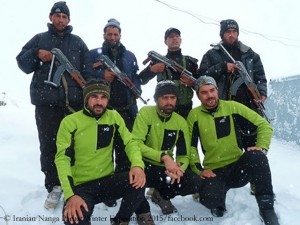
Iranian climbers and their guardians
Heavily armed police officers in the base camp – honestly, that would spoil my joy of mountaineering thoroughly. Soon these special forces are to be not only the exception but the rule in Pakistan, at least at “prestige mountains” like Nanga Parbat (8125 m), K 2 (8611 m) or Rakaposhi (7788 m) and also in much visited camps on the glaciers in the north of the country. In the region of Gilgit-Baltistan, a special “High Altitude Police Unit” was introduced this week. It consists of 50 men now and should be increased to 100 police officers later. The security forces get special clothing against the great cold and are trained by mountaineers, so that they may help in rescue operations in case of emergency. But first and foremost it is their duty to protect foreign climbers.“Because of the ongoing military offensive in the country, there is a high risk of reprisal attacks and we can’t afford to repeat any incident like Nanga Parbat”, police spokesman Mubarak Jan said.
![]() read more
read more
Dawa Gyaljen Sherpa: “Cold war inside”
He was one of the first at the scene. After the fatal avalanche at the Khumbu Icefall on 18 April 2014, Dawa Gyaljen Sherpa rushed down from Camp 2 to help the buried climbers. “On the spot, we encounter dead bodies and blood everywhere. There were a row of dead bodies in one main rope swept into the crevasse”, the 28-year-old Sherpa wrote to me in 2014. “When we pulled the rope, we found the body one after another in the same crevasse. Some of the dead bodies were buried into the snow and we could see only the boots, it seemed those bodies were upside down.” 16 Nepalese were killed in the avalanche, two weeks later the Base Camp was empty, the season finished. Dawa Gyaljen Sherpa has summited Everest four times, he did it for the first time when he was 19 years old. Later Dawa studied in UK. Now he’s living in Kathmandu. I asked him what he thinks about the upcoming Everest spring season. He replied openly. A Sherpa point of view, an interesting insight.
![]() read more
read more
Russell Brice: “At last”
Russell Brice breathes out. “At last”, the 62-year-old New Zealander, head of the expedition operator Himalayan Experience, replies to my question on what he thinks about the planned new route through the Khumbu Icefall on Mount Everest. “We have been asking the SPCC (Note: The Sagarmatha Pollution Control Comitee is responsible for the route through the icefall.) to put the route more central since 2012. Now at last they have listened to the foreign operators instead of the local Sherpas who asked for the route to be moved so as they could travel faster … but not so safely.” Brice doesn’t expect that the new route will take the clients as much time as SPCC president Ang Dorjee Sherpa estimates: “It will take only about one hour longer, not three to four hours. You see there are not many people around these days who have been this way. But I have.”
![]() read more
read more
Discussions about new Everest route
No matter how likely something seems to be, things may turn out quite differently. For many years, most climbers on the Nepalese side of Everest thought that the route through the Khumbu Icefall, which led – seen from below – along the left hand side directly below the West Shoulder, was safe. Until 18 April 2014 when a huge ice avalanche released and killed 16 Nepalis. The Sherpas revolted, the season was over before it had begun. This spring, the route is to be relocated further away from the West Shoulder, about 40 meters to the centre of the Icefall. Ang Dorjee Sherpa, president of the Sagarmatha Pollution Control Commitee (SPCC), which is responsible for the route, said to the Himalayan Times, he expected that the clients need three to four hours more to reach Camp 1. Although the new route is not as risky as the old one, it is more difficult, says Ang Dorjee. Not all are convinced that this is the last word.
![]() read more
read more
The best ager is on the road again
If someone is a “best ager“ in mountaineering, then Carlos Soria. The Spaniard really got cracking beyond 50. At the age of 51 Carlos summited Nanga Parbat, his first eight-thousander. He is now 76 (!) years old and has scaled eleven of the world’s 14 highest mountains. This senior is simply unstoppable. If everything happens as he imagines, not later than in spring 2016 Soria could complete his collection and thus – then aged 77 – become the oldest mountaineer who stood on all 14 eight-thousanders. So far, this “record” is held by Polish climber Piotr Pustelnik, who scaled his last eight-thousander in 2010 at the age of 58. This spring, Carlos Soria set out to climb two huge mountains in Nepal: the 8091-meter-high Annapurna and, not far away, the 8167-meter-high Dhaulagiri. If he is able to summit both, only the 8027-meter-high Shishapangma in Tibet would be missing in his collection. Carlos is already in Nepal.
![]() read more
read more



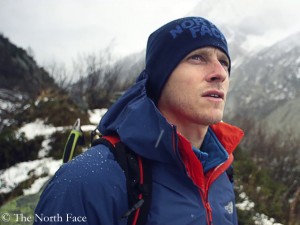

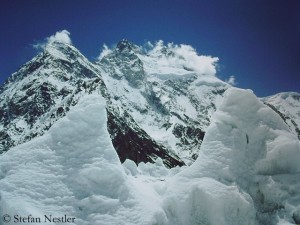
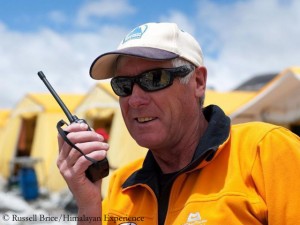
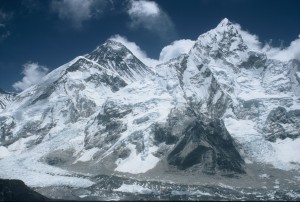
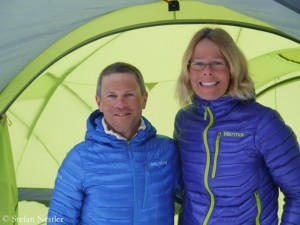

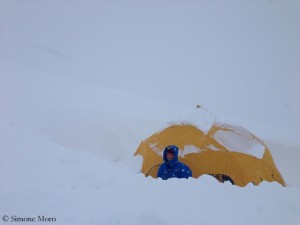
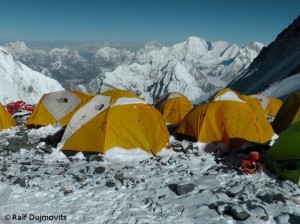
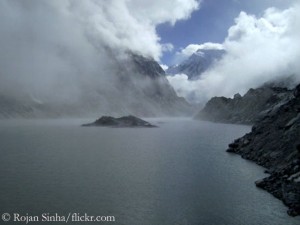

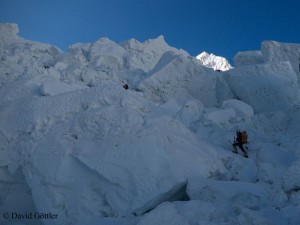
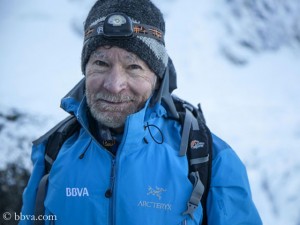





Feedback